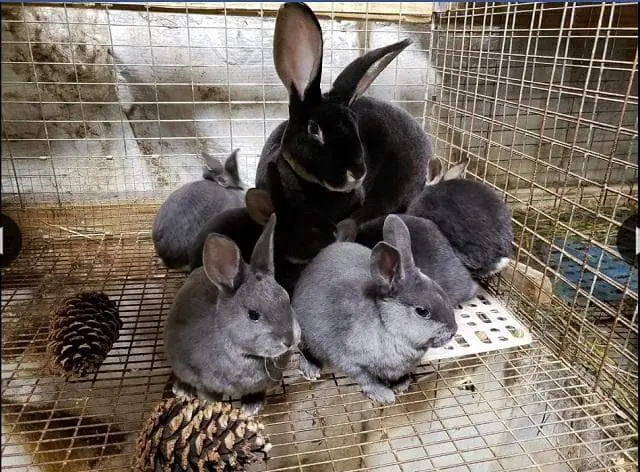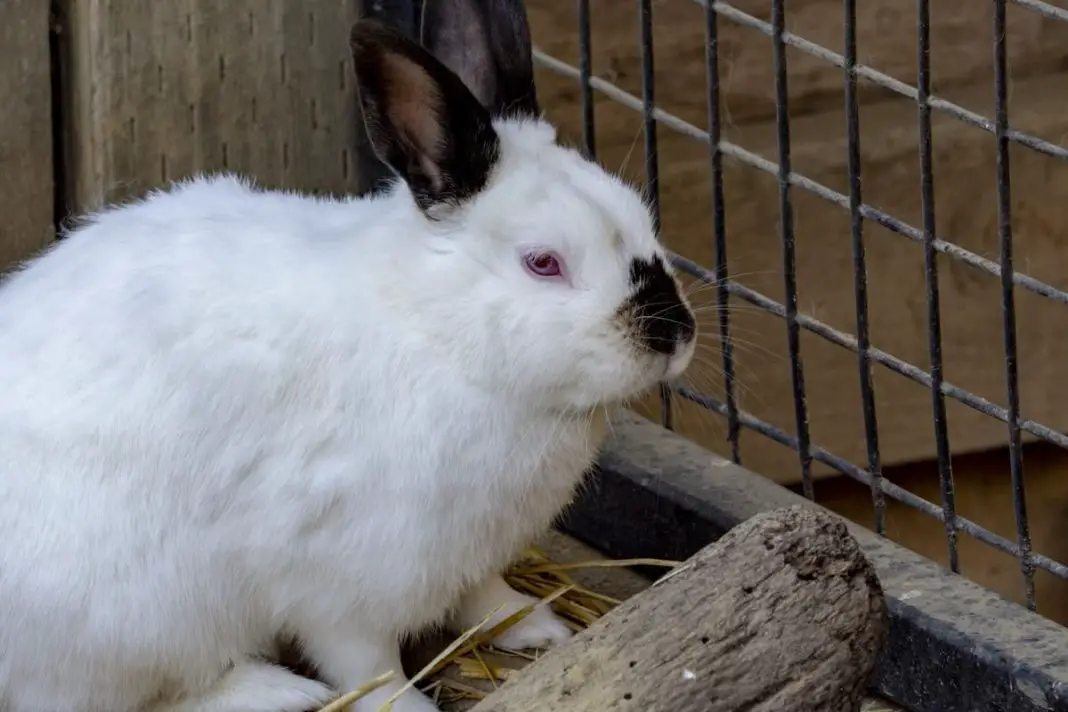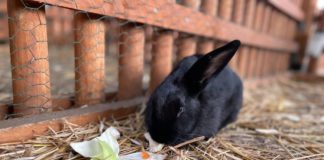Are Wire Bottom Cages Bad For Rabbits?
For rabbits that are kept outdoors, it’s common to see wire used at the bottom of cages. When it comes to using wire at the bottom of a rabbit’s cage, many owners don’t like using it as it can cause rabbits a lot of discomfort. However, in this post, we’ll cover some positives along with the negatives of using wire, along with some alternatives.
Of course, if you have a domestic indoor rabbit, then you should be using a different type of cage.
Before continuing, it’s important to remember that rabbits have a lot of energy, so if they’re kept in a cage, they need to be able to run about without potentially injuring themselves.
Wire Bottom Cages are known for causing sore hocks & calluses, although rabbits that are kept outdoors that have a solid bottom cage are prone to having worm and other parasite issues.

Cons Of A Wire Bottom Cage:
- Can cause sore hocks and calluses
- May cause infection in the feet
- Uncomfortable for the rabbit
- Makes it harder for the rabbit to run around
You still need to have an area that doesn’t have wire at the bottom to allow your rabbit to rest on it.
Pros Of A Wire Bottom Cage:
- Wire bottom cages will carry fewer bacteria
- Your rabbit won’t be living in its own mess
- Not all rabbit breeds will develop sore hocks
- Provides fresh air around the bottom of the cage
It’s important to take into consideration that rabbits quite simply weren’t built to live on wire mesh flooring.
The purpose behind wire-mesh flooring comes directly from our inability to care enough to clean our rabbit’s cages regularly.
Wire-Flooring doesn’t exist in the wild and therefore, to state that it’s better than using solid flooring goes against everything nature has taught us.
Yes, rabbit nails do dig into softer mud, although this only applies to certain areas of the country.
It’s clear that humans don’t know more than nature. As plenty of rabbits live in snowy or icy areas around the world. Some rabbits even live in a mixture of sand and dirt which can be rough on their paws, however, in no situation is there anything in nature that matches a wire bottom.
Pros Of Using Solid Floor Cages:
- Can be less prone to damaged feet
- Not as much risk of getting sore hocks
- It’s closer to a rabbit’s natural habitat
- Less likely to cause fractures
Cons Of Using Solid Floor Cages:
- You’ll need to regularly clean its cage more often
- Higher probability of becoming ill if not cleaned regularly
- Wire And The logistics of a rabbit’s paw
The reality is that the skin at the bottom of a rabbit’s paw simply isn’t hard enough to be on wire meshing. Just like humans, rabbits have various elements of their skin which are thinner and more tender in some areas than others.
The skin of a rabbit’s paw is one of the most sensitive and thinnest parts of the body, making them very susceptible to getting cuts and infections in that area.
However, this isn’t the only issue with using wire mesh flooring, as rabbits are also very prone to bone fractures and breaking nails.
Alternatives To Using Wire Flooring
Grass-Woven Mat
Using a grass-woven mat may be a good alternative, as straw and hay are loose materials. Loose materials can leave the cage even messier.
Grass-woven mats are easy to remove for cleaning. Plus, it will also be a lot easier on your rabbit’s feet.
Advantages Of Using A Grass Woven Mat
These types of mats are easy to clean. Grass woven mats, in particular, only need some wiping if your bunny pees. And you’ll just pick up their poop as well.
Here Are More Of Its Pros:
- It can help to keep them warm
- It provides better traction
- It’s softer and has a natural odor
- It could serve as a foraging area
- Many of these mats are safe to be chewed on by rabbits
You Need To Make Sure That The Grass-Woven Mat Is:
- Free from adhesives
- Natural (without chemicals)
- Doesn’t have any plastic or metal bits
Some Of The Downsides Include:
- It can be quite costly
- If your rabbit was to destroy the mat in a minute, it can be used longer
Note: When using a grass-woven mat, observe your rabbit and check if they’ve been nibbling on their bedding a lot. If they have, they may need more hay or exercise. Stress and boredom can cause them to chew more than usual.
Aspen Wood Shavings
Aspen wood shavings are normally used for outdoor rabbits. Although these days, more people are using wood shavings as bedding outdoors as well, although it can be messy).
Advantages Of Using Aspen Wood Shavings Include:
- Non-toxic
- Soft texture
- Springy effect
- Very absorbent
- Using Wooden Flooring
You’ll often find that a rabbit hutch will have a wooden floor. Although you can also get cages that come with wooden flooring as well. Although a wooden floor can be, in fact, quite suitable for rabbits’ feet, you’ll almost certainly want your rabbit to use a litter box. The good thing about using wooden flooring is that it’s a very absorbent material and will otherwise absorb urine and odor.
A downside to using wooden flooring is that a flooring material can cause a mischievous rabbit to chew at it.
Plastic Flooring
There are rabbit cages that are made entirely of plastic, including the floor. Although plastic is much better for rabbits’ feet than wire, it still has its downfall.
Of course, bare plastic is too slippery for an active rabbit. When using a plastic bottom, something else will need to be added, like a mat or a big piece of tile that can help create a surface that is ideal.
You’ll also want to make sure that the plastic is good quality and is thick and chew-proof (especially if your rabbit is an enthusiastic chewer).
Conclusion
As you can see, when it comes to deciding what to use as flooring for your rabbits’ outdoor cage, it actually matters a lot. The flooring of the cage, and the bedding, play a big role in your rabbit’s foot health. Rabbits really need a surface that is stable, flat, and even.
If at all possible, you should stay away from using wire at the bottom of a rabbit’s cage, as it’s not good for their feet, although there are many people that don’t have much of an option. Just make sure that your rabbit has somewhere else to rest. That’s soft within the cage.








